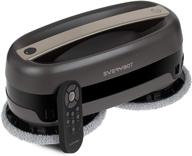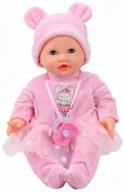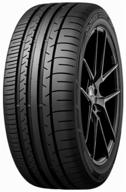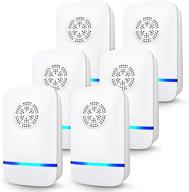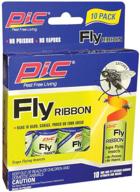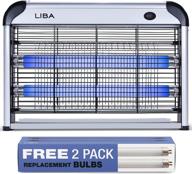The Hidden Dangers of Household Pests
Most people think of pests as a nuisance, but they can actually pose serious risks to your health. Here are some alarming statistics about common household pests:
Cockroaches
- Cockroaches can spread 33 kinds of bacteria like E. coli and Salmonella
- Up to 60% of asthmatic children are allergic to cockroaches
- Cockroaches contaminate food and surfaces with feces and saliva
Similar products
Ants
- Some ants can bite, sting, or spray acids on skin
- Ants can get into packaged and open food
- Carpenter ants can damage wood in a home's structure
Rodents
- Mice and rats contaminate food with urine and droppings
- Rodents can spread over 35 diseases to humans
- Rodent bites can cause infection, allergy, or even rabies
Top products in 🐛 Indoor Insect & Pest Control
Bed Bugs
- Bed bugs feed on blood and cause very itchy welts
- They can hide in furniture, floor cracks, and bedding
- Bed bug bites can lead to skin infections if scratched
Letting pests thrive in your home puts you and your family at risk. Pests spread bacteria, contaminate surfaces and food, and even bite or sting. Their droppings and nests can also trigger allergies and asthma.
Rather than accept pests as inevitable, take steps to keep them out of your home. Inspect regularly for signs of infestations, seal cracks and gaps where pests enter, and use pesticides safely when needed. Protecting your family from pests should be a top priority.
Household Pests Lurking in Your Home
Many undesirable critters try to share our living spaces. Here are some of the most common household pests to keep an eye out for:
Cockroaches
Cockroaches are one of the most prevalent pests. They feed on scraps and garbage and leave behind droppings and bacteria. Cockroaches can squeeze into tiny cracks and crevices. You may see them scurrying when you turn on lights at night.
Ants
Ants invade homes in search of food and water. Some species like carpenter ants can damage wood structures. Ants travel in visible trails along floors, walls, and countertops. You may find them congregating around sweet or greasy spills.
Flies and Gnats
Flies and gnats gain access through small openings like cracks under doors. They are drawn to food particles, standing water, and humidity.warning signs include buzzing near windows and flyspecks on walls or counters.
Silverfish
Silverfish eat substances that contain starch like wallpaper, photos, or book bindings. Look for them in humid areas like bathrooms. You may see them darting out if you move stored boxes.
Clothes Moths
Clothes moths larvae feed on natural fabrics and can damage clothing, textiles, and carpets. Adults don't eat but lay eggs on susceptible materials. Look for holes in garments or evidence of larvae.
Bed Bugs
Bed bugs hide near beds and furniture, emerging at night to feed on blood. Check mattress seams, behind headboards, andfurniture cracks for rust-colored spots from crushed bugs or blood smears from their feedings.
Being aware of the most common pests can help you identify an infestation early. Look for the signs, watch for activity in vulnerable areas, and inspect carefully. Addressing a pest issue quickly can prevent larger infestations down the road.
How to Tell if You Have a Household Pest Issue
Unwanted pests that have made their way into your home often leave behind telltale signs of an infestation. Here are some of the most common clues that indicate it’s time to take action against household pests:
Visible Pests
The most obvious indicator is seeing the pests themselves crawling or scurrying about. Watch for ants marching in neat lines, cockroaches scuttling across floors, and rodents scampering through rooms.
Another interesting products
Droppings
Droppings from rodents, roaches, and other pests are unsightly and unhygienic. Mouse droppings look like small black pellets, while roaches leave droppings that resemble ground coffee grains.
Chemical Smells
Some pests emit unpleasant odors that homeowners may notice. Rodents give off a musky, ammonia-like smell. Cockroaches produce a sweet, musty odor.
Bites and Stings
Waking up with red, itchy welts may indicate you have bed bugs. Ant and flea bites also appear as groups of swollen, irritated spots on the skin.
Damaged Food Packages
Pantry pests like moths and weevils leave behind holes in food bags and cereal boxes. Rats and mice also gnaw into packaged goods.
Smears or Staining
Check walls, floors, and surfaces for streaks from crushed insects or dark spotting from rodent urine. Cockroaches leave oily smears along their trails.
Odd Noises
Listen for sounds like scurrying in walls, fluttering wings, or squeaks. Roof rats are especially noisy at night.
Don't ignore these common signs of household pests. Early detection gives you the best chance to get rid of them before infestations grow out of control. When in doubt, consult an exterminator to identify your uninvited guests.
What to Do When You See Bugs Crawling Around Your House
Catching sight of bugs crawling across your floors or walls can be unsettling. Here's what to do if you spot these unwelcome home intruders:
Identify the Pest
Try to get a clear view of the bugs and identify what type they are. Look for key details like shape, size, color, and movements. Common household invaders include:
- Cockroaches - reddish-brown, oval shaped, and up to 1.5 inches long
- Ants - all different sizes, but typically under 1/4 inch; travel in orderly lines
- Silverfish - silver/gray, around 1/2 inch, skitter quickly and erratically
- Carpet beetles - rounded black or mottled bodies around 1/8 inch long
- Bed bugs - oval, flat, rusty red bugs up to 1/4 inch long
Inspect Carefully
Try to locate where the bugs are coming from by searching behind appliances, under sinks, around pipes and cracks, and in undisturbed storage areas. Look for eggs, larvae, cocoons, shed skins, fecal droppings, or dark stains.
Limit Their Spread
If bugs appear to be isolated to one room, shut the door and seal any openings like under the door gap with a towel. This helps prevent them from migrating to other areas of your home while you address the issue.
Cleanup and Disinfect
Deal with any food debris or crumbs that could be attracting pests. Wash dishes, vacuum, and wipe down surfaces. Disinfect with products labeled to kill bacteria and viruses.
Implement Pest Control
For severe infestations, contact a professional exterminator. For minor ones, use sticky traps, insecticide sprays or dusts, or bait stations and monitor to see if bugs disappear after treatment.
Getting crawling bugs under control quickly is key before they multiply and infest your whole home. Identifying them, restricting their movement, removing attractions, and implementing pest control measures can eliminate unwelcome inhabitants.
What to Do if You Find Bug Droppings in Your Kitchen
Discovering insect droppings or debris in your kitchen cabinets or pantries is a telltale sign of household pests. Here's how to tackle this unsanitary situation:
Identify the Culprit
Take note of any bugs you see crawling around. Also look closely at the size, shape, color, and texture of the droppings to identify the pest:
- Cockroaches - Dark brown or black pellet-like droppings.
- Flour beetles - Tiny black specks made up of exoskeletons and fecal pellets.
- Grain moths - Powdery webbing and cocoons made of silk threads.
- Mice - Rodent droppings are dark, pointy pellets about 1/4 inch long.
Discard Contaminated Items
Check all food packages and throw away anything that shows signs of infestation like chew marks, holes, webbing, or droppings stuck to the product. Discard infested bulk food products and wipe down shelves.
Clean Thoroughly
Remove everything from cabinets and drawers. Vacuum crevices, wipe down all surfaces, and wash removable parts with hot soapy water. Disinfect shelves with a spray like Lysol.
Locate and Seal Entry Points
Inspect cabinets for openings where pests are gaining access. Seal cracks and holes with caulk. Make sure vents are properly screened and door seals are intact.
Use Traps and Low-Toxic Baits
Set glue boards or snap traps inside cabinets to catch insects. Use baits labeled for specific pests like boric acid powder for roaches or rodent bait packs.
With diligent cleaning, sealing, and monitoring, most minor infestations can be controlled. But if droppings persist despite your best efforts, it may be time to call a pest management professional.
What To Do When Bug Bites Itch
Discovering clusters of red, swollen itchy spots on your skin can be a sign you've been bitten by insects or other pests. Here's how to find relief when bug bites cause irritation:
Identify the Culprit
Look at the bite pattern, size, and your activities to detect the source. Single bites in a line may signal bed bugs. Groups of small bites could mean fleas or mites. Large, painful welts could indicate bees, wasps, or spiders.
Clean and Disinfect
Wash bite areas gently with soap and water to remove allergens and decrease risk of infection. Apply an antibiotic ointment. Be sure to keep nails short and avoid scratching.
Apply a Cold Compress
A cold pack, chilled spoon, or even a bag of frozen peas wrapped in a towel can help reduce swelling, redness, and itchiness. The cold temperature numbs nerve endings.
Try Anti-Itch Creams
Look for creams or gels containing pramoxine, camphor, menthol, or calamine to ease itching. Oral antihistamines like Benadryl can also help block the reaction.
Spot Treat with Baking Soda
Make a paste of baking soda and water and apply it to each bite to relieve mild itching. Let dry and rinse.
Soothe with Oatmeal
Grind plain oatmeal into a fine powder, mix it with water, and apply to skin for 10-15 minutes. Rinse when the mixture dries.
Try not to scratch as it can cause infection and further irritation. Most mild bites will heal within a week or less. See a doctor if symptoms persist or worsen.
What Are The Most Effective Indoor Insect & Pest Control Products??
There are several effective indoor insect and pest control products available in the market. Here are some of the most popular ones:
Other indoor insect and pest control products available in the market include traps, baits, and repellents. It is important to choose a product that is safe for daily use around pets and family when used as directed.
Indoor Pest Control
Indoor pest control is an important aspect of maintaining a clean and healthy home. There are several products available in the market that can help you get rid of indoor pests. Here are some of the most popular indoor pest control products:
- Wondercide Indoor Pest Control Spray: This plant-powered insect spray kills and repels indoor pests, including ants, roaches, spiders, flies, fleas, ticks, mosquitoes, fruit flies, silverfish, moths, gnats, earwigs, palmetto bugs, and waterbugs. It is safe for daily use around pets and family when used as directed.
- Ortho Home Defense Insect Killer: This insect killer creates a bug barrier and can be used for indoor and perimeter protection against ants, spiders, roaches, and other pests.
- TERRO Refillable Flea Indoor Insect Trap: This trap is designed to attract and trap fleas, making it an effective indoor flea control solution.
- Bifen IT: This insecticide is effective against almost all insects and can be sprayed on cracks, crevices, baseboards, and any other entry points.
- Raid Ant and Roach Killer: This spray kills ants, roaches, and other crawling insects on contact and provides residual control for up to four weeks.
- Tomcat Super Hold Glue Traps: These traps are designed to catch mice, rats, and other rodents and can be placed in areas where rodents are likely to travel.
- Spectracide Bug Stop Home Barrier: This insect killer creates a barrier around your home to keep insects out and can be used for indoor and outdoor protection.
It is important to choose a product that is safe for daily use around pets and family when used as directed. For best results, clean up food, spills, and dirty dishes to avoid attracting pests. Caulk ant and roach entry points inside and out. Use with outdoor pest control to treat the source of bugs.
What Are The Most Common Indoor Pests And How To Identify Them??
Indoor pests can be a nuisance and can cause damage to your home and health. Here are some of the most common indoor pests and how to identify them:
- Ants: Ants are small insects that are usually black, brown, or red in color. They are often found in kitchens and other areas where food is stored.
- Cockroaches: Cockroaches are brown or black insects that are usually found in kitchens and bathrooms. They are known to carry diseases and can cause allergies.
- Spiders: Spiders are eight-legged arachnids that come in a variety of colors and sizes. They are often found in dark, damp areas such as basements and crawl spaces.
- Silverfish: Silverfish are small, wingless insects that are silver or gray in color. They are often found in bathrooms and kitchens and can cause damage to books, paper, and clothing.
- Bed bugs: Bed bugs are small, reddish-brown insects that feed on human blood. They are often found in beds and other furniture.
- Fleas: Fleas are small, wingless insects that feed on the blood of mammals and birds. They are often found on pets and can cause itching and skin irritation.
- Rodents: Rodents such as mice and rats can cause damage to your home and carry diseases. They are often found in basements, attics, and other areas where food is stored.
Identifying indoor pests can be challenging, but it is important to do so in order to effectively control and eliminate them. Look for signs such as droppings, webs, and damage to food or property. If you are unsure of what type of pest you are dealing with, contact a pest control professional for assistance.





